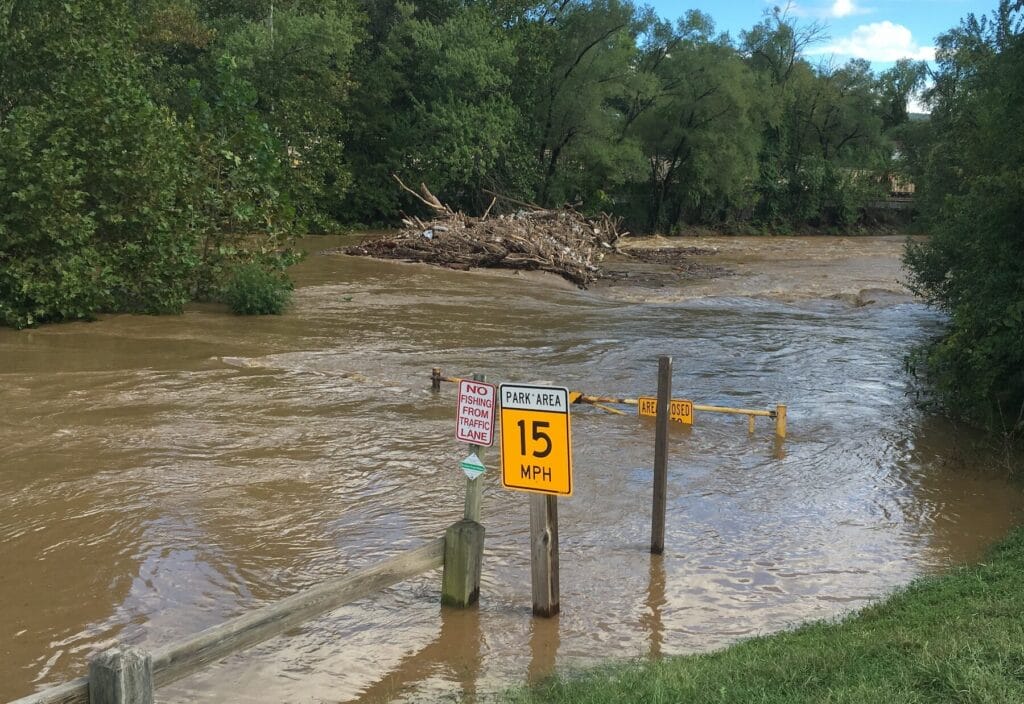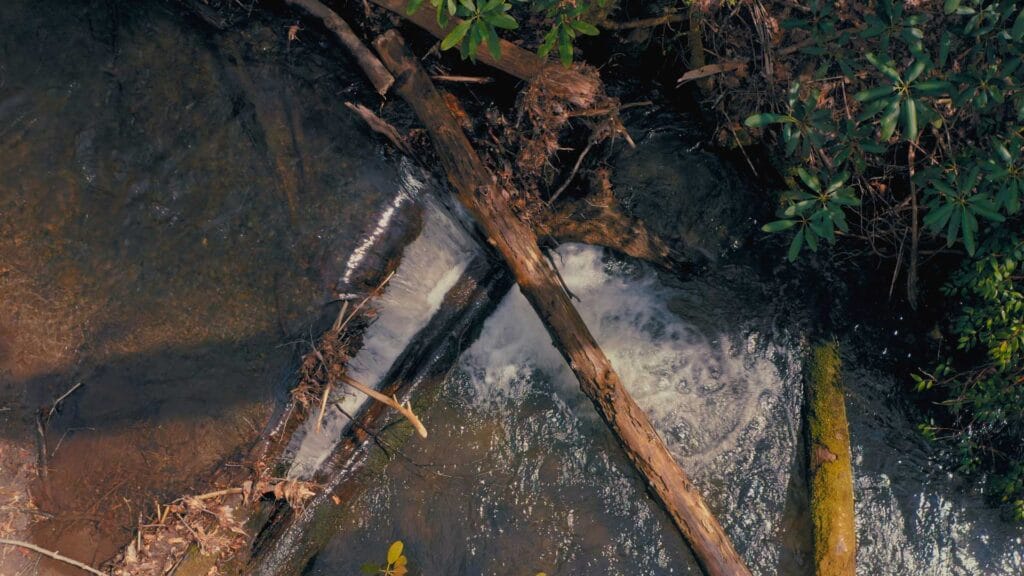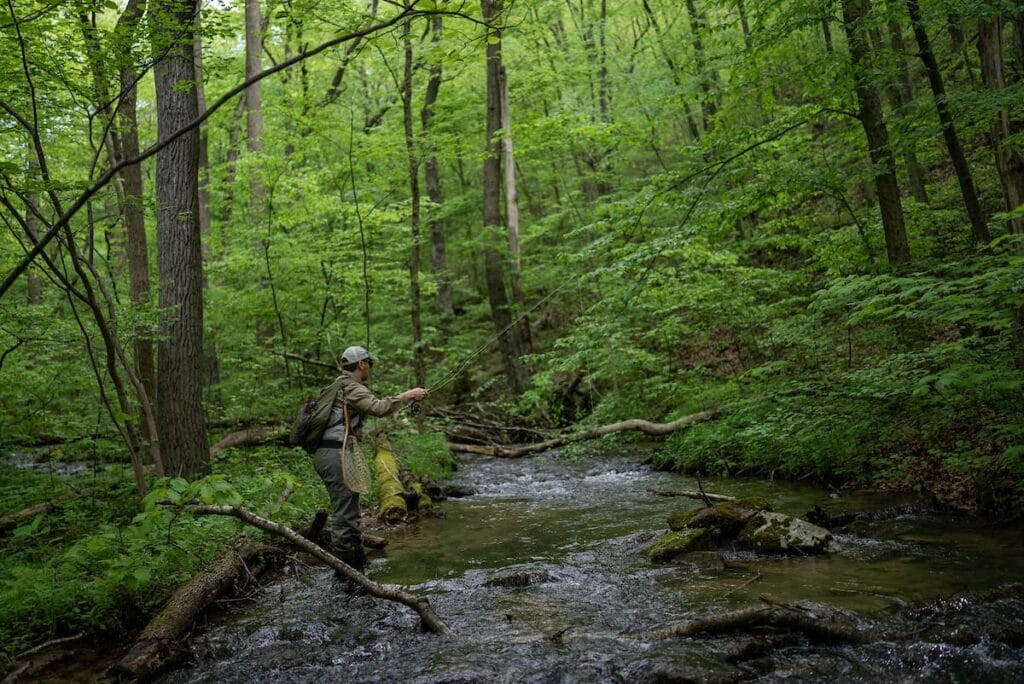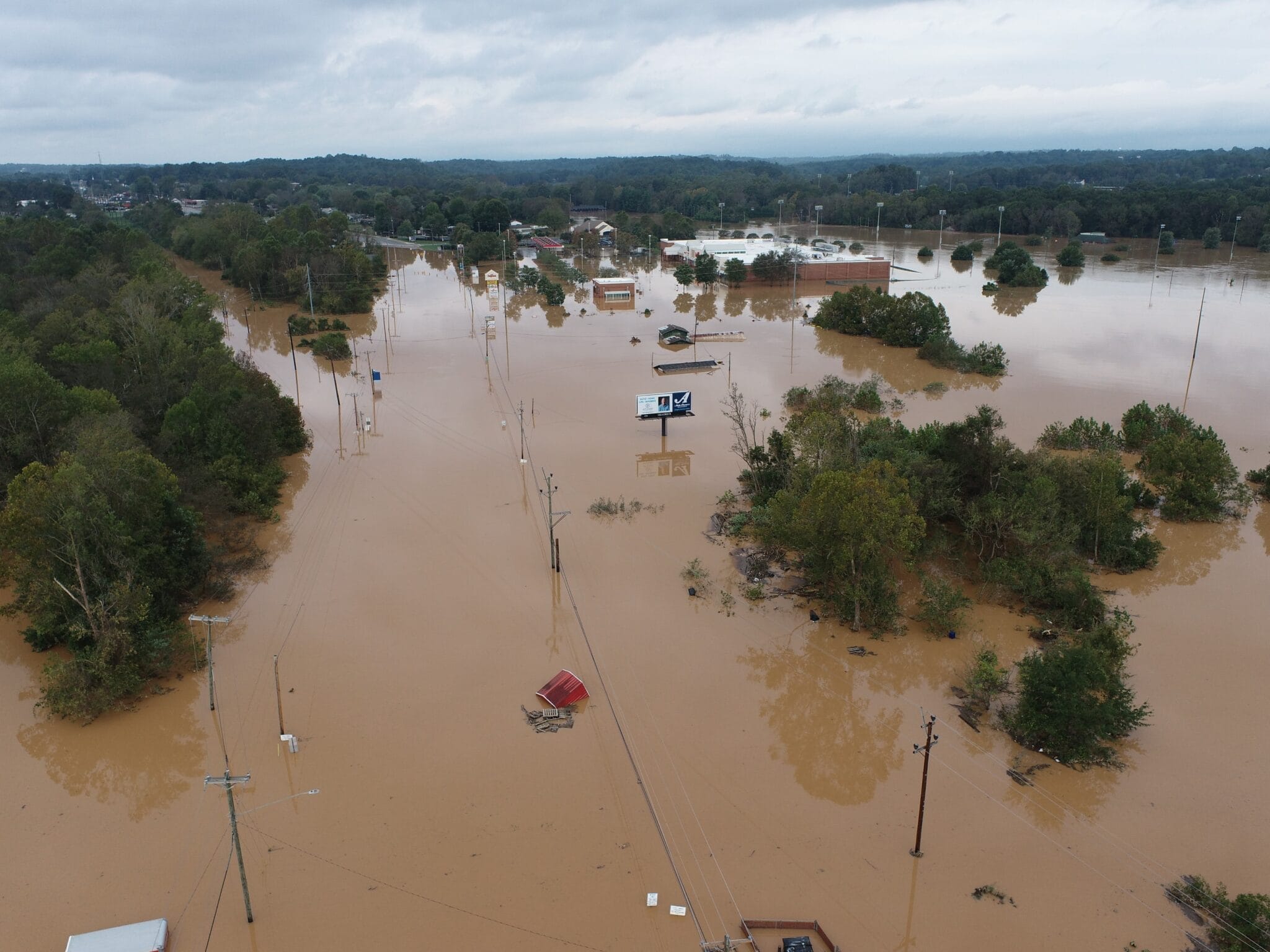August 28, 2011, was a day that changed Jordan Fields’ life. That day, Tropical Storm Irene dumped more than 11 inches of rain on Fields’ hometown in Vermont in just a few hours.
“It was a week before I started my senior year of high school,” remembers Fields. “I watched as my friends’ and neighbors’ homes were swept away. “We spent the next six weeks shoveling sediment out of homes that were left, as well as the high school itself.”
All that mud got Fields thinking––about where the sediment came from and what a future with more serious storms might look like.
“It sent me on the path I’m on today,” said Fields, who eventually earned a PhD from Dartmouth and who now works for TU as an aquatic resiliency scientist and who recently hosted a TU webinar on the science of floods.
The facts bear out Jordan’s concern about those storms becoming more severe and more frequent. That science means TU is constantly working to improve resilience of streams and infrastructure to those storm events.
Fields recently connected with TU vice president for eastern conservation, Keith Curley, to talk about Fields’ work.
Please tell us about your research
My work focuses on how rivers recover after large disturbances, such as floods, fire, deforestation, mining or climate change.
During my PhD at Dartmouth College, we approached this problem in two ways: first, by monitoring the recovery of rivers throughout the state of Vermont for then13 years after Tropical Storm Irene (2011) and after another severe flood in July 2023. Second, we used dam removals as full-scale field experiments to think specifically about the processes that allow a river channel to recover, or not.
What were your most notable findings?
River channels are incredibly resilient and recover rapidly after disturbance. Moreover, floods can actually act to improve river health in the long term by undoing some of the constrictions placed on them by humans over the last few centuries.
What can people do to help streams that have been impacted by flooding?
Of course, we can’t lose sight of the destruction brought by large floods and our first response needs to be to support our friends and neighbors affected by the rising waters.
But floods do offer a great opportunity to rethink our relationship with rivers, both metaphorically and physically. What I mean is that the greatest action that we can take to help both people and streams is to give these channels room to move and evolve over time. That means allowing them to flood where we can.
Are there areas that were previously levied or hemmed in by berms that can be reconnected to the floodplain by removing those barriers? Can floodplain reconnection be enhanced in forested areas or agricultural areas?
Doing so will “catch” water during the next flood, spread it over the floodplain, and decrease the intensity of flooding in downstream areas that we cannot afford to have flood, like town centers, for example.
While what I am describing sounds similar to the effect of a dam, unlike building a dam, reconnecting floodplain has a broad swath of ecologic benefits, is cheap and is a permanent solution.

This sounds like a big challenge in places like your home state of Vermont where towns are built right in the floodplain.
It’s true, in places like New England, and to some extent, Southern Appalachia, we have sited our infrastructure right in the bullseye of floods, as a legacy of the water-power era of the industrial revolution. I think this is why it’s important to communicate the findings I am describing here with municipal and state governments who have the means to buy out some especially vulnerable properties and return those areas to natural floodplains, which offer the flood attenuation benefits I described earlier.
The state of Vermont has a floodplain buyout program that has been quite effective. In 2011, Irene brought extensive damage to towns across the central and southern parts of the state. In July 2023, when a storm of similar magnitude arrived, the damage was generally less severe because the state had done a few crucial things: implemented floodplain buyouts; installed much larger culverts; raised bridge heights when they rebuilt them; and instituted a river and floodplain management course for all Department of Transportation workers in the state so that the folks at the frontlines of this work know how to build flood resilient infrastructure.
Besides working with their local government to make the type of changes you’re describing, what can individuals do in the near term to help their local streams?
Because there is so much infrastructure in our floodplains, floods inevitably bring a lot of debris and trash into our streams. That is one area where individuals can play a huge role: removing trash, plastic, and potentially toxic materials, like car batteries and propane tanks, from the river.
On the flip side, I’d encourage individuals to be more thoughtful about removing wood. Wood in streams helps enhance habitat complexity and slows floodwaters and pushes water onto the floodplain, working to naturally “slow the flow” and decrease downstream flood risk.
That said, wood also poses a risk to downstream infrastructure if mobilized (as some inevitably will be) during flood, so snags in culverts, under bridges or just above that kind of infrastructure should be removed. Individuals can do that too.

The last thing: Talk to your friends, families and neighbors. Rivers flood. It’s natural and healthy for the river and the ecosystem. We can’t stop floods, and our old tactic of building dams and levees has created a false sense of security that has put people in harm’s way during floods like Helene and Irene. We need a new approach, like the one I am describing here.
What shouldn’t we do?
Rebuild in the same place and in the same way. Disaster is bound to strike again if so. Likewise, don’t straighten and berm the channel. Don’t remove all the wood. Don’t rip-rap every bank.
We’ve learned from a century of doing just these things that what actually happens then is that in a simplified channel that is disconnected from its floodplain flood waters pick up speed, are deeper than they would be on a wide floodplain, and like a runaway train, they eventually jump the tracks, often to catastrophic effect.
You said early on that streams recover quickly after floods, dam removals or other disturbances. How long does that take and how does recovery work, specifically?
The answer is complicated by site-specific factors, but I’ll speak in general terms here, noting that it will vary by place a bit.
Post-Irene, we saw stream channels readjusted in just a few years. Post-dam removals, we have observed natural channel forms and processes evolving in a similar timeline, about two years, despite the channel dealing with 100-plus years of sediment, in some cases.
Recovery is rapid because the consequences of floods, erosion and sedimentation, are also the solution. If channels are well-connected to their floodplains, and have wood in the stream, sediment delivered to the channel by floods is then redistributed and trapped along the river corridor, building bars, pools, riffles, and other features. Those features also happen to make for great fishing spots.

Speaking of fish, what does your research tell us about how fish populations might respond to flood impacts?
I am the flow and sediment guy, not the fish expert, but others’ research has repeatedly shown that fish are remarkably resilient to natural disturbances. They’re adapted to floods. They run up small streams during high flows and take refuge. After the flood, they benefit from the habitat enhancement brought by the flood and, like people, suffer in places that have been bulldozed, straightened and bermed.
With this in mind, TU will continue to work to reconnect rivers to their floodplains helping communities and fishing alike.



